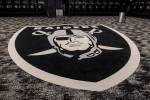Flying the Hungry Skies

Louie Nehme, who’s in the financial insurance industry, travels by air an average of twice a month. So what word immediately comes up when Nehme’s asked to consider the current state of airborne cuisine?
"Nuts."
In this case, the term refers not to the airlines’ culinary offerings — or even to the peanuts that sometimes seem like the only thing to survive budget cuts — but to what Nehme packs to help him get through his flight.
"I’m a big fan of pistachios," he said. He’ll pick up a bag of pistachios and a bag of almonds — getting one salted, the other unsalted — and pack them in his carry-on bag. He’ll snack on the nuts, supplementing from airline offerings and drinking lots of water.
"Depending on what the airline may be serving, I’m probably more inclined to go for the crackers and cheese if they do have it," said Nehme, a native of Australia who now lives in Las Vegas. "It’s probably not the best diet, but enough to keep you going until your next destination."
With the days of airlines plopping hot meals in front of passengers — any meals, whatever the quality — long gone, travelers have to figure out how to keep their stomachs filled en route, and the savvier ones plan ahead.
One obstacle for travelers is that food-service polices vary greatly from one airline to the next. Delta offers snack items on most flights, with complimentary meal service in first class on flights of 3 1/2 hours or longer, while United offers free "cocktail snacks" on most flights and the option of purchasing a snack box or fresh sandwich or salad on others. American sells snacks and bottled water on flights of two hours or more, and light meals on flights of three hours or more. Northwest sells snacks on most flights, snack boxes and sandwiches on some flights. Southwest serves snack items on all flights, with free packaged snack boxes on nonstop flights of longer than two hours.
But there are many ways to fill the gaps. Those who haven’t traveled in a few years will note that airport food-service operators have done their part to rise to the challenge, whether in existing shops, stand-alone kiosks or new outlets.
Spokesman Chris Jones said more prepackaged food is available at McCarran International Airport these days, for multiple reasons.
"Airlines in many cases have cut back on the food that they serve during the flights, so there’s demand from the customers, particularly if they’re going on a long flight," Jones said.
When the changes started, he noted, airport management worked with news and gift outlets to encourage them to sell more grab-and-go foods and beverages.
In addition to the demand prompted by the airlines’ changes, Jones said, increased airport traffic has created a need for more food options. But in many of the older areas of the airport, it’s impossible to do the retrofitting that would be required for a restaurant or sandwich shop.
"But you can stick a kiosk in that area that would have refrigerated sandwiches and salads," he said. "We can get more concessions out to the public without having to deal with major structural changes that may not be possible."
Jones said there’s an emphasis on brands that people recognize, which in some cases pair a full-service restaurant with a grab-and-go display for those who can’t or don’t wish to wait. Among them are Chili’s Too, which has one location in the D Gates and another between the A and B Gates. Original Uno Chicago Pizzeria is in the C Gates, and Wolfgang Puck Express is in the C and D Gates.
Outlets are positioned to suit the needs of the passengers of the airline served by a particular area of the airport. For example, in the C concourse used by Southwest, there’s more of an emphasis on quick-grab foods, because Southwest’s open-seating policy means most of its passengers line up at the gate earlier, instead of lingering in the terminal or concourse. Conversely, he said, a new full-service restaurant is being considered for the D concourse, used by airlines including Delta and United, whose passengers have confirmed seats and head to the gate later.
"We think hard and long about where we’re going to put these things, and we work extensively with (airport master concessionaire for food and beverage) HMS Host to make sure the right things are in the right places," Jones said.
Despite the changes and the research behind them, many people would prefer to bring their own food aboard, and that’s fine with both the airlines and the federal Transportation Security Administration — within reason. To wit: Remember TSA restrictions on taking liquids or gels through the security checkpoint (3 ounces or less, with all containers fitting in one quart-sized zip-top bag, lying flat).
So when is something — say, yogurt — a solid, and when is it a liquid?
"The best rule of thumb I’ve found is if you can smear it or spread it, that indicates that it’s liquid or gel-type consistency," said Jennifer Peppin, a TSA spokeswoman.
However, Peppin pointed out, "you can certainly buy those items once you get through the checkpoint."
But there’s another issue to consider when planning your cloud-level cuisine, and that’s food safety. Mary Wilson, a registered dietitian and extension nutrition specialist with Nevada Cooperative Extension, suggests peanut-butter-and-jelly sandwiches, beef jerky, trail mix or dried fruit.
"It’s easy because that’s not going to spoil," Wilson said. "Keep in mind that you don’t want any food that’s perishable out of the refrigerator more than two hours. If the temperature is above 90, it’s only one hour."
Her suggestions include Nutri-Grain cereal bars, Honey-Nut Cheerios Milk ‘n Cereal Bars, cheese and crackers, bar cookies such as Fig Newtons, fruit (including frozen grapes) or string cheese. Some of these items are more easily crushed than others, she noted, so your choices should be influenced by how well you can pack them.
The bottom line: If you don’t want to be hungry and you care about what you eat, you’re going to have to plan ahead, and take care of it yourself.
"That’s what we have to deal with today with air travel," Wilson said. "It’s just the way it is."


















